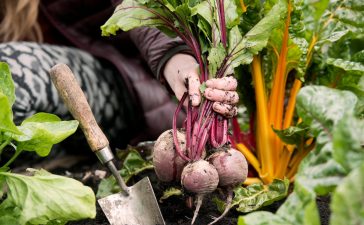Ricardo Lopez’s taqueria is famous for a melt-in-your-mouth birria recipe that takes three days to prepare. Every week, hundreds of customers flock to La Vaca Birria in San Francisco’s Mission District for a taste of the slow-braised beef served over rice and beans or tucked into a crispy taco with a side of rich dipping broth.
Lopez recently hiked the price of his signature birria burrito to $22, an eye-popping figure even in the pricey city. The move rankled some customers, with one posting a scathing review that expressed disbelief at how the burrito’s price had doubled from $11 just two years ago.
In a detailed response that quickly went viral, Lopez argued that the price tag was justified due to the runaway costs of ingredients such as beef and onion, as well as rising labor costs.
His plea felt like a microcosm of the pain experienced by restaurant owners across the US as food prices remain stubbornly high despite cooling inflation. Many items have yet to return to pre-pandemic prices, leaving small food businesses – already operating on thin margins – with limited options beyond passing the increase to customers.
Lopez, 31, talked to Guardian about the factors that helped push his burritos from $11 to $18 to $22, and why he hopes “every damn Mexican restaurant in the Bay area raises their prices”.
Rising costs
When Lopez went back to his food order receipts from mid-2021, and compared them with his recent orders, he found many items whose prices had risen and, in some cases, almost doubled. He shared the receipts with the Guardian to verify the prices; for some items, he could not find receipts from 2021, so we relied on his memory of the price. (These prices are different from his Instagram estimates, since they’re based on different dates.)
Behind the cost increases
The rising costs of ingredients are driven by some major geopolitical events, from droughts in the midwest and Texas to Russia’s invasion of Ukraine.
Continuing droughts have encouraged ranchers to shrink the size of their cattle herds, said Ted Schroeder, an agricultural economist at Kansas State University, thus reducing supply and driving up price. At one point in recent years, “close to 60%” of US cattle grazing lands were experiencing significant drought, he said.
The wholesale price of beef is up 46% over the past three years, Schroeder said, and beef prices are expected to remain near record highs.
The Black Sea region, where Russia meets Ukraine, is a major source of the world’s grain supply, but another major crop in Ukraine is sunflowers, which are used to make popular cooking oils, said Ricky Volpe, a food supply chain economist at California Polytechnic State University. The war has pushed the price of kitchen oil up, as well as having effects on global supplies of wheat and petroleum.
The jump in Lopez’s estimated onion prices was a bit of a head-scratcher, Volpe said, and might be specific to a particular supplier, since overall onion costs weren’t up that much.
The broader reasons behind price inflation continue to be debated, with some US researchers and politicians arguing that the country is experiencing “greedflation”, propelled by companies deciding to turn customers’ willingness to pay higher prices during the pandemic into ongoing profits.
“After Covid, everything skyrocketed first, and then everything lowered,” Lopez said. But “nothing has gone down to pre-Covid pricing, which is hard to understand being anything besides greed”.
How do you solve the price of a burrito?
While overall food prices have gone up sharply in the past few years, Volpe said, they haven’t jumped as much as the 100% increase in La Vaca Birria’s burrito. One possibility, he said, was that Lopez’s small business might have been charging too little in the beginning and operating at a loss.
Lopez said that Volpe was right: to attract people to his recently opened business, he had tried to keep the price of his food as low as possible, worried that people would not try something new that was also pricey. In November 2023, Lopez wrote on Instagram, his business account was overdrawn. Then, just days later, a San Francisco Chronicle reviewer crowned La Vaca Birria the best burrito in the Mission district, the heart of the city’s Mexican food scene, and customers tripled overnight.
The first thing Lopez did after the glowing review wasn’t raise his prices: it was lower the commission he was offering to food delivery apps in exchange for displaying his restaurant more prominently on their sites.
But in December 2023, still feeling the squeeze, he raised the burrito price from $18 to $20. Then, in early March 2024, he raised it again.
As one commenter pointed out, $22 is not the price of a burrito you can eat every day. And that’s “completely correct”, Lopez said. “We do not see ourselves as an everyday burrito.”
Higher-volume businesses in the Mission such as the burrito-slinging institution El Farolito might have a smaller profit margin per burrito, but they reliably serve thousands of customers a day. Lopez is serving closer to 200 customers on a good day and is still building name recognition.
There is no way a small business, especially a one-location store like Lopez’s, can compete with big chains on the cost of their food, Volpe, the food chain economist, said. So deciding to offer a more expensive, high-quality product is the most rational choice.
Another unique factor of La Vaca Birria’s burrito math is that Lopez has a Muslim business partner and the restaurant serves all-halal meat. That means they attract enthusiastic Muslim customers from as far as Sacramento, but also that they don’t serve pork, which, at about $2 a pound, is substantially cheaper than beef, Lopez says. While other Mexican restaurants can make higher margins on their pork al pastor or carnitas burritos, he said, La Vaca Birria doesn’t have that option.
What is good Mexican food worth?
The debate over the $22 burrito has raised questions about whose cuisine is allowed to be expensive. With Italian food, customers “don’t have an issue” with paying $22 for pasta al pomodoro, Lopez pointed out, even though the dish is relatively cheap to make: canned tomatoes, dried or fresh pasta, and just a few other ingredients.
So when it comes to a $22 burrito, Lopez asks, “What’s the difference?”
Preparing his birria is an intensive, three-day process, based on a recipe inherited from his grandfather. It takes an hour just to clean the seeds and the stems from the dried chillis for the spice mix that flavors it. The beef is marinated overnight, then braised in the oven at a low temperature for six hours, and then has to chill in the fridge for a full day. At the end, scrubbing the beef pans can take another hour.
Lopez says he’s seen many Mexican and Chinese restaurants avoid raising prices because the cuisine is valued for offering cheap and takeout meals. “The Chinese and Mexican restaurants have not been increasing prices along with inflation,” he said. “I’m barely seeing some restaurants where the burrito is $15. It should have been that two years ago.”
After multiple television stations did segments on La Vaca Birria’s $22 burrito, Lopez says, the restaurant received angry phone calls including one who told them to “get the f*** out of his country” and another calling him an idiot.
Some of the backlash appears racist: Lopez said that a Black baker in San Francisco who sells $18 loaves of sourdough talked about facing similar criticism after being named one of the country’s most creative new bakeries by Bon Appétit.
Lopez says that in the eyes of some, restaurateurs of color may be allowed to innovate, but “people don’t think it should be worth any more than a certain price point”.
But many of the comments on Lopez’s Instagram posts about rising costs have been unexpectedly positive, with people across industries saying that the challenges of inflation have resonated with them. He said the controversy had doubled the number of customers coming in to try La Vaca Birria’s specialties.
“We’ve seen a lot of business,” he said. “People, at least in San Francisco, have definitely come out to support.”







